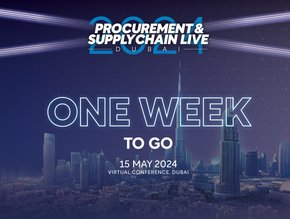How mid-sized companies control unmanaged procurement spend

A much greater portion of mid-sized company spend often falls outside of the approved budget of finance or procurement departments – and as a result outside their visibility and control. This is due to various issues including ad-hoc spending on “non-catalog” items such as IT systems, R&D, and services contracts.
Co-founder and CEO of ORO Labs Sudhir Bhojwani explains the procurement pain points that mid-market companies face and how to address them. Sudhir is a former product leader at SAP Ariba and has spent decades helping organisations overcome procurement and supply chain challenges.

The challenges facing mid-sized companies
Can you specify how procurement spending differs between enterprises and mid-market companies?
Overall macro spend categories are very similar between mid-market and enterprise companies. At a more micro-level, we see higher percentages of spend on IT infrastructure in large enterprises, and a correspondingly higher percentage on professional and consulting services, while IT spend at mid-market companies is more subscription and cloud-based. We see mid-market companies lacking effective governance, controls and compliance into this spend.
This brings us to the primary difference: the maturity of the procurement function. Of course there are industry variances, but generally, companies do not begin to hire procurement staff until they exceed 1,000 employees. When they hire a procurement leader to begin building the procurement function, the leader typically begins to focus on establishing policies and procedures, and ensuring compliance on the most critical spend categories (such as IT spend). Understanding the existing contracts, tracking renewals and rationalising spend are immediate priorities. Purchasing a solution to control the intake of this spend becomes mission critical.
In short, mid-market procurement leaders are primarily focused on introducing and establishing preliminary controls, while larger enterprise organisations already have these controls in place and can focus more on the reduction of spend.
Why is managing procurement spend such a notable challenge for fast- growing companies?
Since the procurement function is not typically established until years into the company’s existence, when it is introduced, it’s often like trying to build a plane while it is in flight. Moreover, procurement is often seen as antithetical to the quick, nimble nature that’s required for fast growth – especially if the organisation is relying on older tools. New mid-market procurement leaders are faced with very limited resources, non-existent purchasing processes, lack of spend under management, and increasing regulatory oversight – all of which adds to the complexity of the procurement function.
The immediate priority is around establishing controls and a level of governance to mitigate risk; once that is established, the focus on spend management can begin. But unfortunately, it isn’t always easy. The lack of controls in a company – something that often has been the case for many years – has bred a rogue, chaotic culture. Establishing these preliminary controls and changing employee behaviour is a herculean task, even for the strongest procurement leader.
Tools become critical in this instance. Without the correct tool in place that can effectively and intuitively guide the employees through the newly established processes, spending will continue to remain unmanaged and grow even more uncontrolled as the users refuse to adopt, and sometimes actively undermine, the prescribed process. At this point, procurement typically is at a crossroads. What good are the controls, policies and processes that were established if there is no way to enforce compliance? Or perhaps worse, procurement is now in a position of trying to “force” a process that employees see it as cumbersome and difficult to use. The image of procurement becomes
very negative and seen as a major friction-point to getting business done. Over time, procurement is relegated to just “issue the PO” and the entire strategic importance of procurement is lost. That said, I believe this is changing. Often, it is the older archaic solutions that have driven friction and limited the value of procurement, while newer tools and approaches increase value and impact dramatically.
What are the impacts to mid-market companies when dealing with unmanaged procurement spend?
If the spend is unmanaged, that spend is likely at risk. I don’t mean just at risk of overpaying for a good or service, but more importantly at risk of failing to abide by a potential regulatory or legal requirement, suffering invoice fraud, or worse. Getting a grip on this spend and – at a minimum – ensuring compliance to your policies and procedures is paramount. Once this is established, textbook spend management can begin. Once hard dollar savings can be proven, we then see more investment in procurement, including contract managers, objectives and performance indicators for savings.
How companies can control unmanaged procurement spending
What are some measures that companies can take to get unmanaged procurement spend under control?
This is an exciting time in the evolution of procurement technologies, as next-generation tools are emerging to help better address the problems of unmanaged spend. And this isn’t just a mid-market problem. A significant amount of spend at large enterprise companies might follow an approval flow, but we could argue it is still not managed to its fullest extent as it is logged as a “non-catalog” transaction in some archaic procurement or ERP tool.
These new procurement tools, like those from ORO Labs, can walk employees through the maze of best practice procurement policies and procedures in a humanised manner – ensuring a great experience for users and procurement visibility into the spend pipeline. This allows companies to quickly deploy a solution and achieve maximum adoption across all spend categories. If they already have an older procurement solution in place, fantastic. These modern solutions can sit on top and be user-facing while letting those older systems “issue the PO.”
What tips can you share about how organisations can deal with:
- A large “tail-spend” of unmanaged suppliers
- A lack of visibility into spend management,
- Inefficient, manual and error-prone purchasing processes, and
- Unmanaged spend across various spend channels
I believe these issues are all byproducts of procurement tools designed for a different era. At the core of all of these older tools was the focus on “indirect spend management,” or forcing enterprise-wide usage of catalogues to achieve negotiated cost savings. But catalogues are costly and difficult to manage, and do not address a significant percentage of the spend in an organisation. Moreover, clunky supplier management tools compounded these problems.
In short, today’s modern solutions mean you do not have to throw the baby out with the bath water. It is open-heart surgery to replace a procurement solution. Instead, newer solutions like ORO’s Smart Procurement Workflows can sit on top of your existing procuretech stack and both humanise and orchestrate the experience (for both employees and suppliers) with different systems, teams, and processes. This significantly improves the ability to manage more spend and suppliers, while streamlining your procurement processes and providing visibility into not only the entire spend pipeline but also resource utilisation.
Can you touch on the importance of spending visibility? How can companies improve in this area?
Spend visibility is critical. It isn’t much different than in your personal life. How do you create family budgets if you have no understanding of where your money is going? Yet it is still very difficult in many companies as spend is often tied to user-entered account codes (which are not always accurate) or grouped at higher category levels, which doesn’t give the granularity required to make better procurement decisions. It’s even more difficult if the spend is non-PO as usually the line level details of the invoice are not captured for analytics. And then there is services spend, which is encumbered by the age-old challenge of tracking and managing it. Here is where the AI of intake solutions like ORO’s Smart Procurement Workflows becomes very interesting. If, at the point of user interaction, the tool can automatically determine the correct categorization at a granular level, then visibility into spend and analysis becomes much easier. As the organisation grows and matures, this information is captured and a living record of this spend is maintained. So in short, I believe the continued problems that a lack of spend visibility presents are more a product of older generation procurement tools. These tools are often limited in adoption in terms of the broader organisation, cause significant ad-hoc spend, and lack the detail necessary to facilitate true enterprise-wide spend visibility.
What can companies do to create a greater procurement experience overall?
It isn’t getting easier for procurement. Over the last 20 years, the procurement function has shifted and its charter has grown far beyond achieving cost savings and, as one CPO told me, it’s now about “protecting and serving the business.” Add to that more and more stakeholders, more processes, more regulations, more software solutions used by more departments, and more corporate compliance checks – all have dramatically increased the complexity for procurement.
For the most part, the investment in procurement hasn’t scaled with the increases in responsibility and complexity. Yet, the modern employee expects to move fast and have an easy experience like they have in their consumer life with online shopping, finance, etc. Many procurement organisations I have spoken with are at a breaking point and suffering from low Net Promoter Scores (NPSs) due to this friction between procurement and business.
This is where I believe next generation solutions can significantly help. They have been created and architected from the ground up for this very purpose: to address the modern needs of procurement. Utilising modern AI capabilities to intelligently interact with users in a humanised way, while ensuring compliance to corporate processes and possessing the agility to handle the modern, ever-changing environment, solutions like those from ORO Labs are uniquely positioned to be deployed quickly and exponentially improve the employees’ experience with procurement. Moreover, the best of these tools are designed to connect all of the procurement-adjacent systems like TPRM, ERP, Sourcing, and others into the workflow, providing a universal front door experience, ensuring visibility and greatly reducing cycle times. We believe if users embrace a solution and truly enjoy the experience, then the engagement with procurement will improve.
*************************************************
For more insights into Procurement & Supply Chain - check out the latest edition of Procurement Magazine and be sure to follow us on LinkedIn & Twitter
Other magazines that may be of interest - Supply Chain Magazine | Sustainability Magazine
*********************************************
BizClik is a global provider of B2B digital media platforms that cover 'Executive Communities' for CEOs, CFOs, CMOs, Sustainability Leaders, Procurement & Supply Chain Leaders, Technology & AI Leaders, Cyber Leaders, FinTech & InsurTech Leaders as well as covering industries such as Manufacturing, Mining, Energy, EV, Construction, Healthcare + Food & Drink.
BizClik, based in London, Dubai & New York offers services such as Content Creation, Advertising & Sponsorship Solutions, Webinars & Events.






